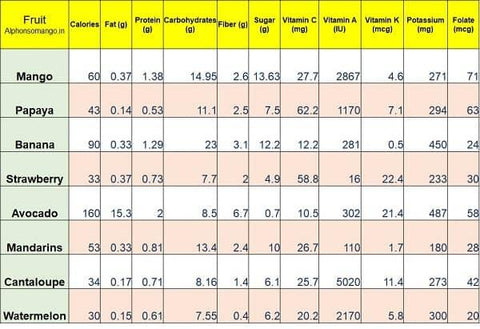
Dried Prunes and Diabetes: Benefits and Uses
Dried Prunes and Diabetes: A Comprehensive Guide
Living with sugar levels requires taking careful steps to manage your diet and lifestyle. One of the most important things is to choose foods that help control glycemic levels in the body while providing essential nutrients.
Dried prunes, or dried plums, are a natural and healthy snack that may benefit people with sugar patients. This post will examine how SukhaAloo Bukhara can help manage sugar levels and improve overall health.
Understanding सुखा आलू बुखारा: A Superfood GI
sukhaaloo Bukhara is suitable for sugar patients. They contain essential nutrients and dietary fibre. This makes them a valuable addition to a diabetic diet.
They have a low glycemic index, so they don't raise sugar levels much. They also contain natural sugars and essential nutrients, making them a nutritious snack for diabetic people. Learn more about them and why they matter to people with sugar levels.
Buy Dried Prunes
Good snack option for Diabetics?
Prunes can be a good snack option for people with Diabetics as they have a low glycemic index and are rich in fibre and antioxidants.
However, consuming prunes in moderation and monitoring blood sugar levels is essential to ensure they fit into an individual's overall diabetics management plan.
Nutrition of Aloo Bukhara Dry fruit for Glucose?
Sukha aloo Bukhara is a good option for people with Diabetics as they have natural sugars and dietary fibre.
They have a low glycemic index which helps to manage glucose levels. Sukha aloo bukhara contains essential nutrients, antioxidants, and potassium.
You can eat them in moderation as part of a healthy snack.
Nutrient of Dried Plums
With a rich nutrient profile, sukha aloo Bukhara offers dietary fibre and potassium essential for overall health.
Moderation is critical, as Plums provide vital nutrients supporting digestion and heart health.
People with Diabetics benefit from plums' essential nutrients and antioxidants, making them a valuable addition to their diet.
Why Dried Prunes Good for Diabetics
Sukha aloo Bukhara offers a low glycemic index (GI) alternative to other sweet snacks, making them suitable for people with Diabetics.
They are also high in fibre, aiding sugar control and contributing to heart health.
Their sweet flavour also makes them a pleasant option for satisfying dessert cravings.
High Fibre Content in Dried Plums
sukha aloo Bukhara supports heart health and digestion and offers dietary fibre for better blood sugar control. With high fibre, plums aid in maintaining lower blood pressure, contributing to diabetic management and overall health. Their fibre content makes them beneficial for heart health and supports digestive functions.
Low Glycemic Index of Sukha Aloo Bukhara
Supporting diabetic management, Plums with a low glycemic index are a beneficial choice for glycemic control. Their inclusion aids in managing blood glucose levels, making them suitable for people with glycemic.
The low glycemic index of sukha aloo Bukhara supports diabetic management, offering a flavorful and nutritious option.
Dried Prunes: A Source of Potassium
Supporting heart health, Sukha Aloo Bukhara is rich in potassium, aiding in blood pressure control and benefiting people with diabetics. The potassium in plum contributes to overall health and supports lower blood pressure levels, making them valuable to a healthy diet.
Best Prunes for Diabetics and Sugar Levels
Best Prunes for people with diabetics can impact blood sugar levels due to their low glycemic index (GI) and high fibre content. The fibre slows down the absorption of sugar into the bloodstream, preventing rapid spikes.
Additionally, They are rich in vitamin K and boron, which support bone health and help manage diabetics-related kidney complications.
How Dried Prunes Diabetes Help Regulate Blood Sugar Levels
They support blood sugar control, dry prunes and Diabetics in managing Diabetics when included in a balanced diet. Their fibre content helps regulate blood glucose levels and control spikes.
Additionally, They play a role in better blood sugar regulation for diabetics, making them beneficial for diabetes management.
Dry Prunes and Diabetes in Insulin Sensitivity
Including Aloo Bhu and Diabetes in a balanced diet may enhance insulin sensitivity for people with Diabetes and potentially improve their condition.
The consumption of this can aid in better insulin sensitivity, contributing positively to diabetes management.
Health Benefits of Dried Prunes for Diabetic Patients
Supporting a healthy heart and reducing the risk of kidney disease, Sukha Aloo Bukhara is packed with fibre, boron, and vitamin K. They contribute to lower calorie and glycemic index levels.
At the same time, their natural sweetness adds flavour without causing blood sugar spikes. Additionally, they help prevent constipation and diarrhoea, making them a valuable addition to a diabetic diet.
Dried Prunes and Diabetes in Digestive Health
Improving digestion and preventing constipation, Sukha Aloo Bukhara fibre content aids in nutrient absorption.
Acting as a healthy snack, they help regulate blood sugar levels and contribute to overall health when consumed in moderation. Including sukha aloo bukhara in smoothies can further enhance digestive health.
The Antioxidant Power of Dried Prunes and Diabetes
Protecting against cell damage and lowering blood pressure, the rich antioxidants in dried prunes and Diabetes promote heart health and prevent complications.
With natural sugars and essential nutrients for postmenopausal women, consuming sukha aloobukhara in moderation aids diabetes management and bone health, reducing the risk of osteoporosis.
Dried Prunes and Diabetes in Weight Management
Including sukha aloo Bukhara in a balanced diet aids in weight management and glucose absorption, as they are low-calorie snacks when consumed in moderation.
The fibre in sukha aloo bukhara promotes a feeling of fullness, preventing overeating. Moreover, moderate intake contributes to a balanced diet and insulin sensitivity, making them better than high-sugar snacks for diabetics and overall health.
Myths: Dried Prunes and Diabetes Content
Debunking myths about Sukha Aloo Bukhara, they have a lower sugar content than most people think. Even though they are sweet, the sugar in Dried prunes and Diabetes doesn't impact blood sugar levels as much. With a low glycemic index, prunes release sugar slowly into the bloodstream, making them suitable snacks for people with diabetics.
The Truth about Sukha Aloo Bukhara and Sugar Levels
With a lower glycemic index than raisins and apricots, sukha aloo Bukhara has minimal impact on blood glucose levels. Eating them in moderation won't lead to high blood sugar levels. Their low glycemic index makes them suitable for people with diabetics. Incorporating Dried Prunes and Diabetes into smoothies is a diabetic-friendly option.
Why Dried Prunes are Different from Other Sugary Foods
With a lower glycemic index, sukha aloo bukhara suits people with diabetes. Their balanced carbohydrate content sets them apart from high-sugar foods. The natural sugars in Sukha Al have minimal impact on blood glucose levels, making them a healthier snack. Including Sukha Aloo Bukhara in yoghurt or smoothies can be part of a balanced diet for diabetics.
Dried Prunes suitable for Diabetics-Friendly Diet
Sukha Aloo Bukhara, in a diabetics-friendly diet, can provide essential nutrients like fibre and boron. They also have a low glycemic index, which helps prevent spikes in the bloodstream. sukha aloo Bukhara is a flavorful addition to meals and snacks for individuals managing diabetics.
Recommended Serving Size of Dried Prunes for Diabetes
Consuming the appropriate serving size of dried aloobukhara is crucial for managing blood sugar levels and ensuring proper nutrition. Moderation and portion control are fundamental when incorporating sukha aloo bukhara into a diabetic-friendly diet. Healthcare providers play a vital role in recommending suitable grams of sukha aloo bukhara to manage blood sugar, promoting overall health for people with diabetes.
Creative Ways to Include Them
Incorporate सुखा आलू बुखारा into smoothies and yoghurt for health and bone health benefits. Enjoy them as snacks or in recipes to contribute to a balanced diet and essential nutrients. Get creative with Sukha Aloo Bukhara in meals and snacks for diabetic-friendly, balanced nutrition.
Approach to Diabetics Management
Incorporating Sukha Aloo Bukhara into your diet can aid in managing Diabetes naturally. They are low in calories and have a low glycemic index, preventing rapid blood spikes. Additionally, the fibre in prunes promotes healthy digestion and helps regulate blood sugar levels, offering a sweet flavour without causing harmful effects on your health.
Lifestyle Changes with Dried Prunes Consumption
Incorporating dried plums, known for their natural sugars, into a balanced diet is crucial for managing Diabetes. Consuming dried plums in moderation supports blood sugar control and prevents spikes. Their fibre content aids digestion and overall health when consumed in moderation, lowering blood pressure and heart health.
The Role of Regular Check-ups in Diabetes Management
Regular healthcare provider visits are essential for monitoring blood sugar levels and overall health. Periodic check-ups help assess the impact of Sukha Aloo Bukhara on blood glucose levels and diabetes management. Healthcare provider consultations ensure effective diabetes management and sukha aloo Bukhara benefits for overall health. Monitoring blood sugar levels through regular check-ups is crucial for evaluating the effects of sukha aloo bukhara consumption on diabetes management and overall health.
Can Dried Prunes Alone Control Diabetes?
Sukha Aloo Bukhara, when included in a balanced diet, can help control blood sugar and manage diabetics. However, it's important to note that lifestyle changes and regular check-ups are crucial for diabetes management. Moderation is vital when consuming aloo Bukhara for Diabetic Patients, as it can complement overall health and support controlling blood glucose levels and diabetes complications.
Conclusion
Dried prunes can benefit people with diabetes. They have many nutrients, help regulate sugar levels, and improve insulin sensitivity. Prunes are rich in fiber, have a low glycemic index, and provide potassium. They also aid digestion, protect against oxidation and help manage weight.
Even though prunes taste sweet, they do not affect sugar levels the way sugary foods do. You can add them to your diet with a recommended serving size. However, it is important to remember that lifestyle changes and regular check-ups are crucial for diabetes management. While prunes are good for diabetics, they should not be the sole treatment for diabetes.















